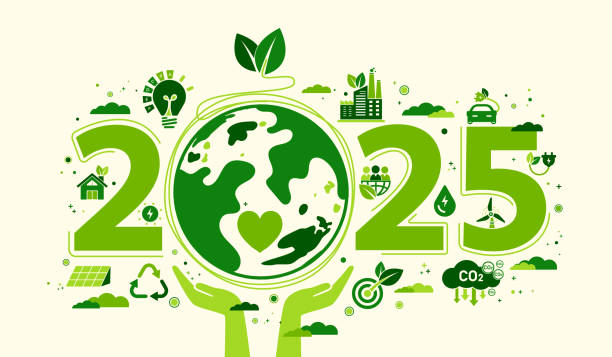Introduction
Sustainability is no longer just an option—it’s a necessity. As we move into 2025, climate change, pollution, and resource depletion remain major global challenges. Fortunately, adopting a sustainable lifestyle doesn’t have to be complicated. Simple, everyday choices can significantly impact our planet’s future.
This guide covers 10 ways to be more sustainable in 2025, from reducing waste and making eco-friendly travel choices to embracing renewable energy and sustainable fashion. Whether you’re just starting your sustainability journey or looking for new ways to go green, these tips will help you contribute to a cleaner and healthier world.
1. Embrace Sustainable Trends in 2025
Sustainable living is evolving, and 2025 brings new trends that focus on reducing carbon footprints and protecting natural resources. What are the sustainable trends in 2025?
- Circular economy: More brands are designing products that can be reused, recycled, or repurposed.
- Sustainable tech: Smart homes, energy-efficient appliances, and AI-driven waste management systems are on the rise.
- Eco-friendly fashion: Ethical brands, second-hand shopping, and biodegradable fabrics are becoming more mainstream.
- Plant-based diets: More people are shifting toward vegan and vegetarian lifestyles to reduce their environmental impact.
- Electric vehicles (EVs): Governments are pushing for cleaner transport, making EVs more affordable and accessible.
These trends reflect a growing global movement toward greener, more responsible consumption.
2. Choose Eco-Friendly Travel Options
The tourism industry is responsible for nearly 8% of global carbon emissions, but that doesn’t mean we have to stop traveling. Instead, we need to make better choices. What is the future of sustainable travel? In 2025, more travelers are:
- Choosing trains over short-haul flights to cut down on emissions.
- Booking eco-friendly accommodations like sustainable hotels and lodges that use renewable energy.
- Supporting local businesses instead of large corporations to boost community economies.
- Traveling off-season to reduce the strain on popular destinations.
By being mindful of how and where we travel, we can enjoy the world while minimizing harm to the environment.
3. Support Sustainable Tourism
Travel should benefit both the planet and the people who call those destinations home. What is the sustainable tourism 2025 approach? It focuses on three key pillars:
- Environmental conservation – Protecting natural habitats and reducing pollution.
- Economic support – Ensuring local communities benefit from tourism.
- Cultural respect – Preserving traditions, heritage, and indigenous knowledge.
For example, instead of staying at an international resort chain, consider an eco-lodge run by locals. Instead of engaging in wildlife tourism that exploits animals, support sanctuaries that focus on rehabilitation and ethical treatment. Small changes make a big impact.
4. Reduce Waste and Go Zero-Waste
The average person generates about 4.9 pounds of waste per day—most of which ends up in landfills or oceans. To combat this, here’s how you can reduce waste in 2025:
- Switch to reusable products like water bottles, shopping bags, and stainless-steel straws.
- Compost food scraps to reduce organic waste and enrich soil.
- Shop in bulk to cut down on unnecessary plastic packaging.
- Repurpose and upcycle old items instead of throwing them away.
A zero-waste lifestyle may seem daunting at first, but even small efforts—like saying no to plastic bags—can lead to significant positive changes.
5. Opt for Sustainable Energy Sources
Fossil fuels are one of the largest contributors to climate change. Thankfully, renewable energy is becoming more accessible. Here’s how you can embrace sustainable energy in 2025:
- Install solar panels at home to generate your own electricity.
- Choose green energy providers that use wind, hydro, or solar power.
- Reduce energy consumption by using LED bulbs, energy-efficient appliances, and unplugging devices when not in use.
Switching to renewable energy may require an initial investment, but it saves money in the long run and reduces reliance on non-renewable resources.
6. Adopt a Greener Diet
Food production accounts for about 25% of global greenhouse gas emissions. A sustainable diet is one of the most effective ways to reduce your carbon footprint. Here’s how:
- Eat more plant-based meals to lower demand for resource-intensive meat production.
- Buy local and seasonal produce to reduce transportation emissions.
- Reduce food waste by planning meals, storing food properly, and composting scraps.
- Support sustainable farming by choosing organic and ethically sourced products.
Small dietary changes can have a big impact on both personal health and the planet.
7. Make Your Home More Energy-Efficient
Your home plays a significant role in sustainability. Making it more energy-efficient can reduce both utility bills and environmental impact. Consider:
- Smart thermostats to optimize heating and cooling.
- Better insulation to reduce energy loss.
- Energy-efficient appliances that consume less electricity.
- Rainwater collection systems for gardening and household use.
A few simple upgrades can turn your home into a sustainable living space.
8. Sustainable Fashion Choices
The fashion industry is one of the most polluting industries, producing 92 million tons of waste annually. Here’s how to make more ethical clothing choices:
- Buy second-hand from thrift stores or online platforms.
- Choose sustainable brands that use organic and recycled materials.
- Upcycle old clothes to give them new life instead of discarding them.
- Avoid fast fashion by investing in high-quality, long-lasting pieces.
Sustainable fashion isn’t just good for the environment—it also supports ethical labor practices and reduces waste.
9. Participate in Global Environmental Movements
Raising awareness and advocating for change is just as important as making personal lifestyle shifts. What is the theme of the environment in 2025? The global focus remains on:
- Climate action – Urging governments and corporations to commit to sustainability.
- Biodiversity protection – Preserving forests, oceans, and wildlife.
- Sustainability education – Encouraging schools and communities to adopt greener practices.
Supporting environmental organizations, attending sustainability events, and spreading awareness can amplify efforts toward a greener future.
10. Plan for a Fully Sustainable Lifestyle
How to live 100% sustainably? While achieving full sustainability may be challenging, here are some steps to get closer:
- Be mindful of consumption – Only buy what you truly need.
- Support green businesses – Choose companies that prioritize sustainability.
- Advocate for policy change – Vote for leaders who prioritize the environment.
- Stay informed – Keep up with sustainable trends and innovations.
Every effort, no matter how small, contributes to a larger movement toward sustainability.
Conclusion
Sustainability in 2025 isn’t about perfection—it’s about progress. Whether it’s reducing waste, choosing ethical fashion, supporting sustainable tourism, or switching to renewable energy, every step counts. By embracing these 10 ways to be more sustainable in 2025, we can all contribute to a greener, healthier planet.


